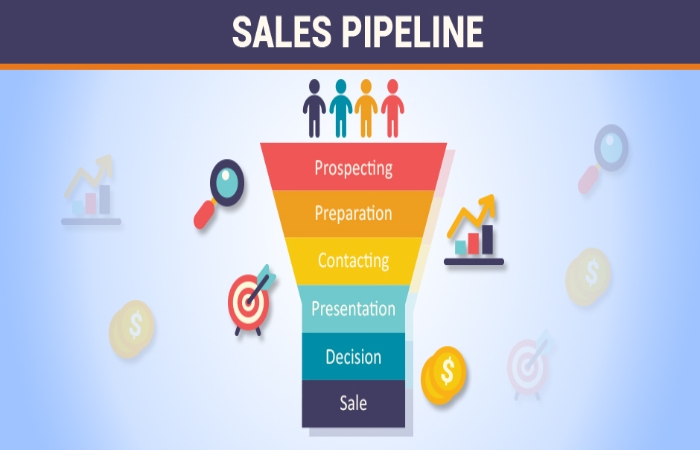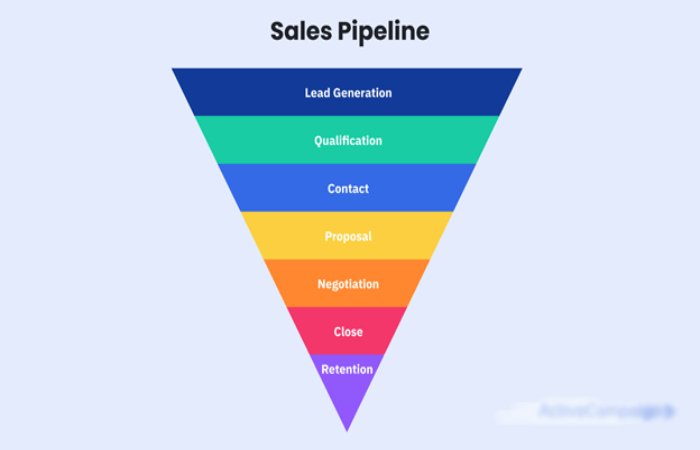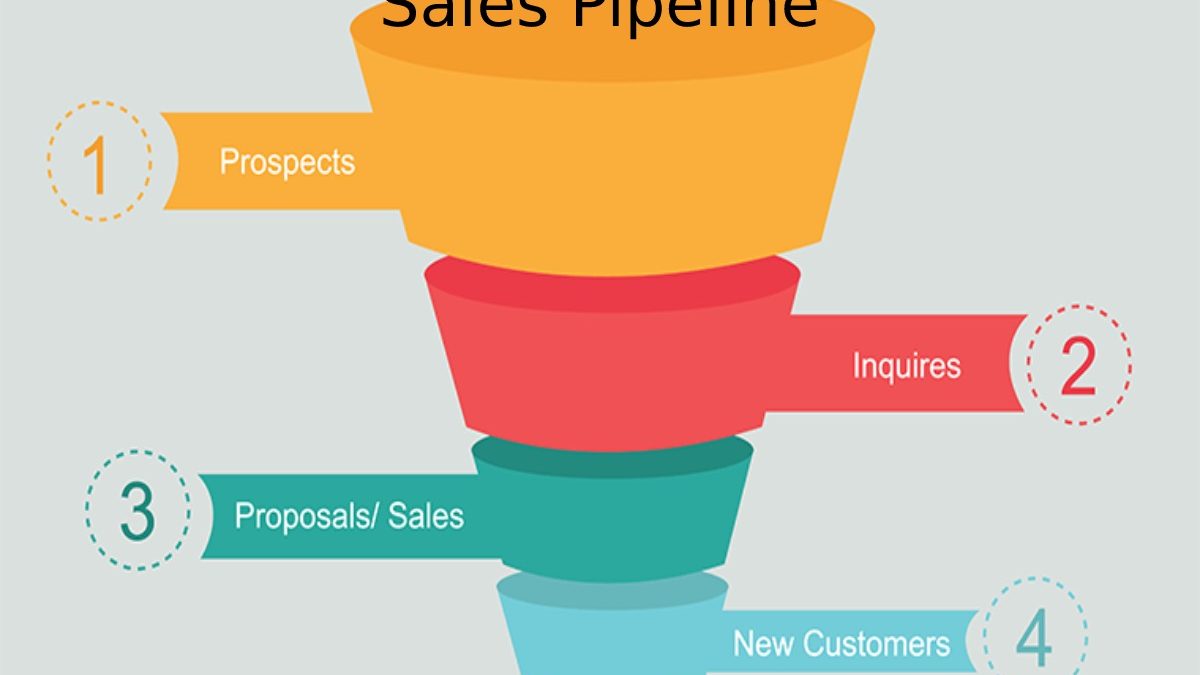Table of Contents
Introduction
The sales pipeline is a management tool that allows you to visually and dynamically organize your company’s sales flow. A sales pipeline is a visual snapshot of existing opportunities at different sales process stages. The sales pipeline also tells you the number of deals and their value. In other words, the pipeline reflects the movement of each potential customer from their first contact with the brand to the post-sale stage. It also lets salespeople know what sales to focus on, where they need to put effort ( sales activities ), and how much they will likely earn in the coming months.
The sales pipeline is one of those sales footings that gets thrown around a lot. But, suppose you spend any time in sales circles. You’ll catch a lot about ‘getting prospects into the pipeline,’ ‘increasing your pipeline,’ and ‘filling your pipeline with hot leads.’
What is a Sales Pipeline?

- A sales pipeline is a visual and organized way to track multiple potential buyers through different stages of the buying process.
- In that way, it is very similar to other pipelines in different sectors.
- The definition above that pipelines are a way of tracking progress toward a goal through a series of specific stages is a pipeline for companies in all industries.
- Pipelines are often viewed as a horizontal bar, sometimes a funnel, divided into a company’s sales process stages.
- Potential buyers move from one phase to the next as they go through the sales process: when contact is made, for example, or when a potential customer is qualified.
- It’s a way of illustrating where potential customers are on their journey from lead to (hopefully) customer.
- With a pipeline, sellers can see exactly where their money, deals, and other sales efforts are at all times.
- It’s a vital tool for salespeople, who often juggle lots of sales leads and offers and can’t afford to let one get away.
- It is also an influential tool for sales managers who want more data on how their sales process works.
- Since a pipeline tracks the activities of a salesperson, it offers more visibility into which sales activities are giving the business the best performance.
- “Companies don’t know what their chances are,” says Michelle Seger. A partner at Sales Globe, based in Atlanta.
- “If you can see their activities, how long they have been there and what their conversion rates are, it will tell you where you are and what is not working.”
Building your Sales Pipeline
- Since a pipeline is an essential sales tool, you can’t just toss one together.
- In its place, you’ll need to make sure you have specific information about your company. Sales team, customers, and product before you can assemble one.
Here and now are some of the things you’ll need to have on hand before you can start creating a pipeline:
- A list of your prospective buyers
- Your team’s sales process
- Your revenue targets
- A meeting scheduled with colleagues
The Six Stages of a Sales Pipeline

These should be the stages of the sales pipeline of a company that follows a typical B2B sales process:
Lead generation:
There are several methods to generate leads for your business, including paid and free campaigns, and to let your possible customers know that you exist. Classically, you create an ideal customer profile with specific parameters and try to reach potential customers that fit that profile through various campaigns.
Lead qualification:
This step is crucial in the sales pipeline stages. An opportunity is identified with a lead, and a record is created as the first step in successfully closing a sale.
Start contact:
In this pipeline stage, a sales representative tries to contact the lead to learn about their business and requirements. This stage helps you reference your company’s services according to the needs of the information.
Schedule a meeting or a demo:
After your primary conversation, if your services convince the lead, you can schedule a demo during this pipeline stage. You can also try to place a meeting with the decision maker to negotiate the sale.
Negotiation:
The lead has expressed interest in acquiring your services and is now reaching the negotiation stage. You negotiate a price, benefits, conditions, etc., to make a profitable sale and send your proposal.
Closing of the sale:
It is the final stage of your sales process, where you record the result of the operation. If the process ends between you and the prospect, the sales transaction will be won or lost. There are times when the buyer is not yet ready to buy. In that case, you can keep it as a “farm” to return to it later.
The stages of the sales pipeline vary by industry. Waqar Azeem, founder of Content Studio, says, “We follow a low-touch sales model. A trade enters the sales pipeline by signing up for a trial or directly by booking a demo meeting. We have six stages in our sales pipeline, including test signups, sales qualified leads, demo schedules, on hold, ready to buy, and win/loss deal.”
Also Read: Permission Denied Publickey Gssapi With Mic Password


